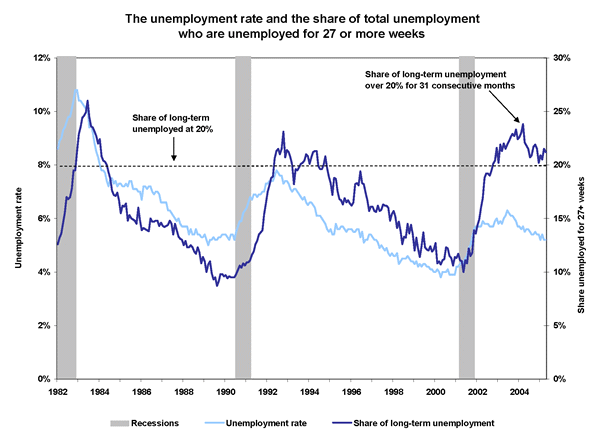See Snapshots Archive.
Snapshot for May 18, 2005.
Unemployment rate and long-term unemployment continue to diverge
The unemployment rate and long-term unemployment (i.e., the share of those unemployed for more than six months) have historically run fairly parallel courses. As the unemployment rate increased or decreased, so did the share of long-term unemployment, usually with a short lag in time.
This trend was consistent from 1948 through the 1980s. The last two downturns, however, have seen a different picture emerge—the divergence of these two series. The 2001 recession and recovery have had relatively low unemployment rates, but the long-term share has been more than 20% for an unprecedented 31 consecutive months (from October 2002 to April 2005).

Since the beginning of this recovery (November 2001), the unemployment rate has averaged 5.7%, varying between 5.2% and 6.3%, with the average share of long-termers at 20.4%. Historically, when unemployment rates have averaged 5.7%, the average share of the long-term unemployed was only 12.3%.
It is disconcerting that the share of long-term unemployment remains so high even as the unemployment rate has decreased to 5.2% in the last two months. This, along with the unprecedented sustained decline in labor force participation, suggests that there is much more labor slack than is suggested by the unemployment rate.
Source: Author’s analysis of BLS data.
Note: This Snapshot was taken from the forthcoming issue brief “The Rising Stakes of Job Loss: Stubborn Long-term Joblessness Amid Falling Unemployment Rates” by Andrew Stettner and Sylvia A. Allegretto.
This Snapshot was written by Sylvia A. Allegretto.
